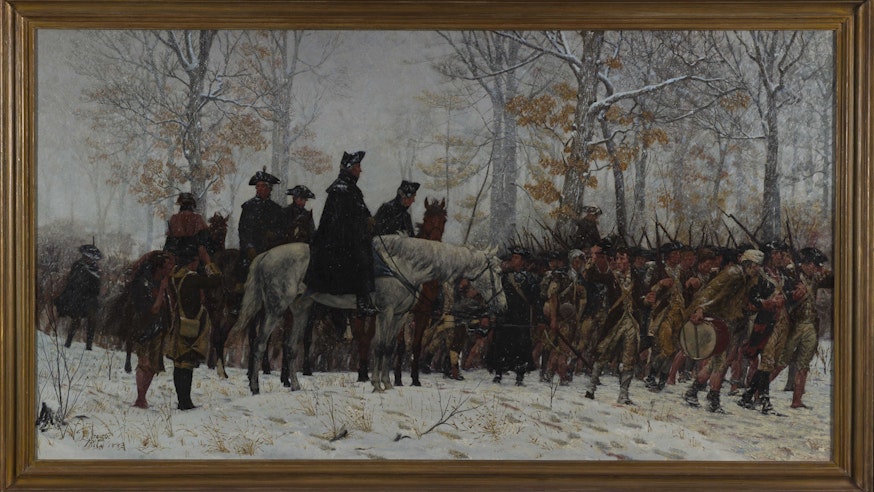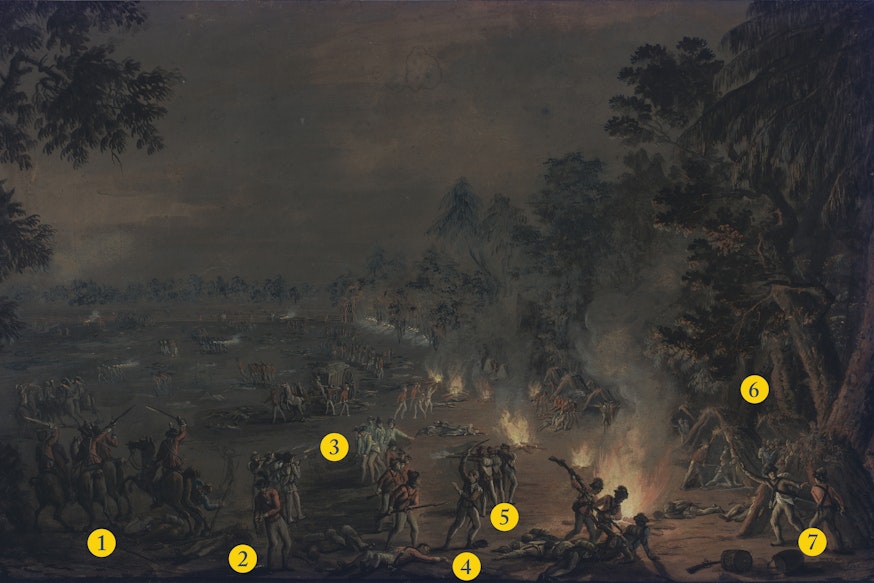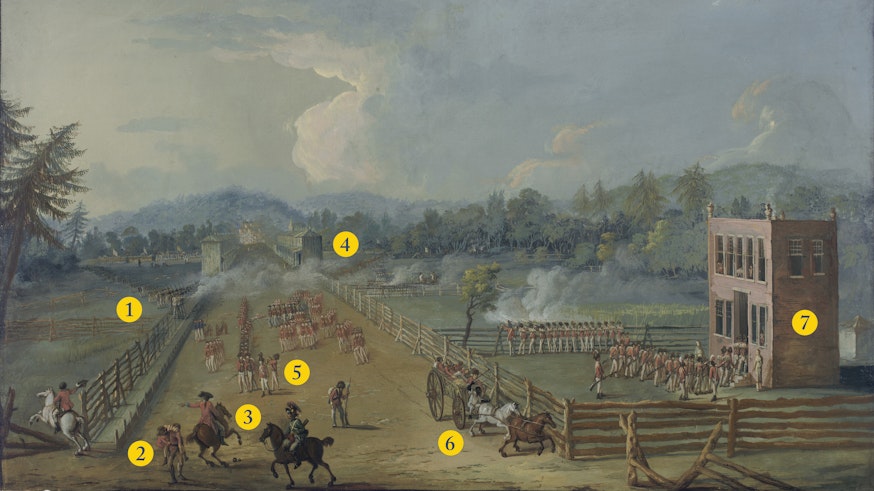Washington Troops at Valley Forge Drawings Easy
The March to Valley Forge, December 19, 1777 is one of the most iconic paintings of the Revolutionary War. Painted by Philadelphia artist William B. T. Trego in 1883, the scene shows the Continental Army limping into their winter encampment at Valley Forge. Follow the details below to learn more about the history and artistry captured on canvas. Seethe original painting on display in the Museum of the American Revolution's Winter Soldiers gallery in the core exhibitionon your next visit.
In 1883, Trego submittedThe March to Valley Forge for consideration in the Temple Competition of Historical Painting at the Pennsylvania Academy of the Fine Arts (PAFA). The judges of the competition determined that no submission was worthy of first or second prize, but they awarded third prize to Trego. Believing that he deserved first prize becauseThe March to Valley Forge had been deemed to be the best painting in the competition, Trego brought PAFA to court. After two years of court battles, the Pennsylvania Supreme Court finally dismissed Trego's case and upheld PAFA's decision.

1. William B. T. Trego's Signature
Trego signed this painting in the bottom left corner: "W T Trego Phila 1883." A childhood illness (possibly polio) caused Trego to be unable to move his fingers and hands. He painted this masterful work by gripping a brush between the thumb and forefinger of one hand while moving it with the other.
2. General George Washington
Trego painted General Washington at the center of the scene. When the Continental Army arrived at Valley Forge, Washington repeatedly shared his army's dire situation with the Continental Congress. He particularly noted how the army desperately needed food, otherwise his troops may "starve—dissolve—or disperse, in order to obtain subsistence in the best manner they can."
3. Trego's Artistry
The soldier shown here adjusting his shoe was the subject of one of Trego's preparatory or study paintings for this canvas. That study painting, recently acquired by the Museum of the American Revolution, shows the soldier holding his musket, a detail obscured by another figure painted into the final scene.
4. Winter Weather
Trego emphasized the wintery conditions experienced by the Continental Army on Dec. 19, 1777. However, he may have exaggerated how much snow was on the ground that day. Sergeant Jeremiah Greenman of Rhode Island recorded in his diary that the days leading up to December 19th featured "raining weather" and "rain & cold." Pennsylvania Lieutenant Samuel Armstrong described it as "Thick Clouday Weather." On Dec. 18 and 19, Henry Melchoir Muhlenberg in nearby Trappe, Pennsylvania, reported "cold rain" and "stormy winds and piercing cold."
5. Bloody Footprints
The bare and bandaged feet of some of the hardened veterans of the Continental Army left trails of blood on the cold ground at Valley Forge. General William Alexander (Lord Stirling) described the condition of the troops days before their arrival: "they are already worn out by a long fatigueing Campaign, a Considerable part of them in the Hospitals, above one half of those in Camp are almost naked, and are walking barefooted on the Ice or frozen Ground."
Seethe original painting on display in the Museum of the American Revolution's Winter Soldiers gallery in the core exhibitionon your next visit. The March to Valley Forge painting is part ofMuseum of the American Revolution's collection, conserved with funds provided by the Society of the Descendants of Washington's Army at Valley Forge.
Editors Note: Spelling and grammar have not been altered from their original sources.
Learn More

March to Valley Forge
This iconic depiction of the march to Valley Forge by William B. T. Trego was painted in Philadelphia and exhibited at the Pennsylvania Academy of Fine Arts in 1883.
See Object 
Breaking Down Xavier della Gatta's Battle of Paoli Painting
British Army officer Richard St. George remembered Paoli as a "nocturnal bloody scene" and helped create the detailed painting of the battle.
Read More 
Breaking Down Xavier della Gatta's Battle of Germantown Painting
British Army officer Richard St. George worked with Italian artist Xavier della Gatta to create the painting of the Battle of Germantown.
Read Morehowittworidence64.blogspot.com
Source: https://www.amrevmuseum.org/learn-and-explore/collection/breaking-down-trego-march